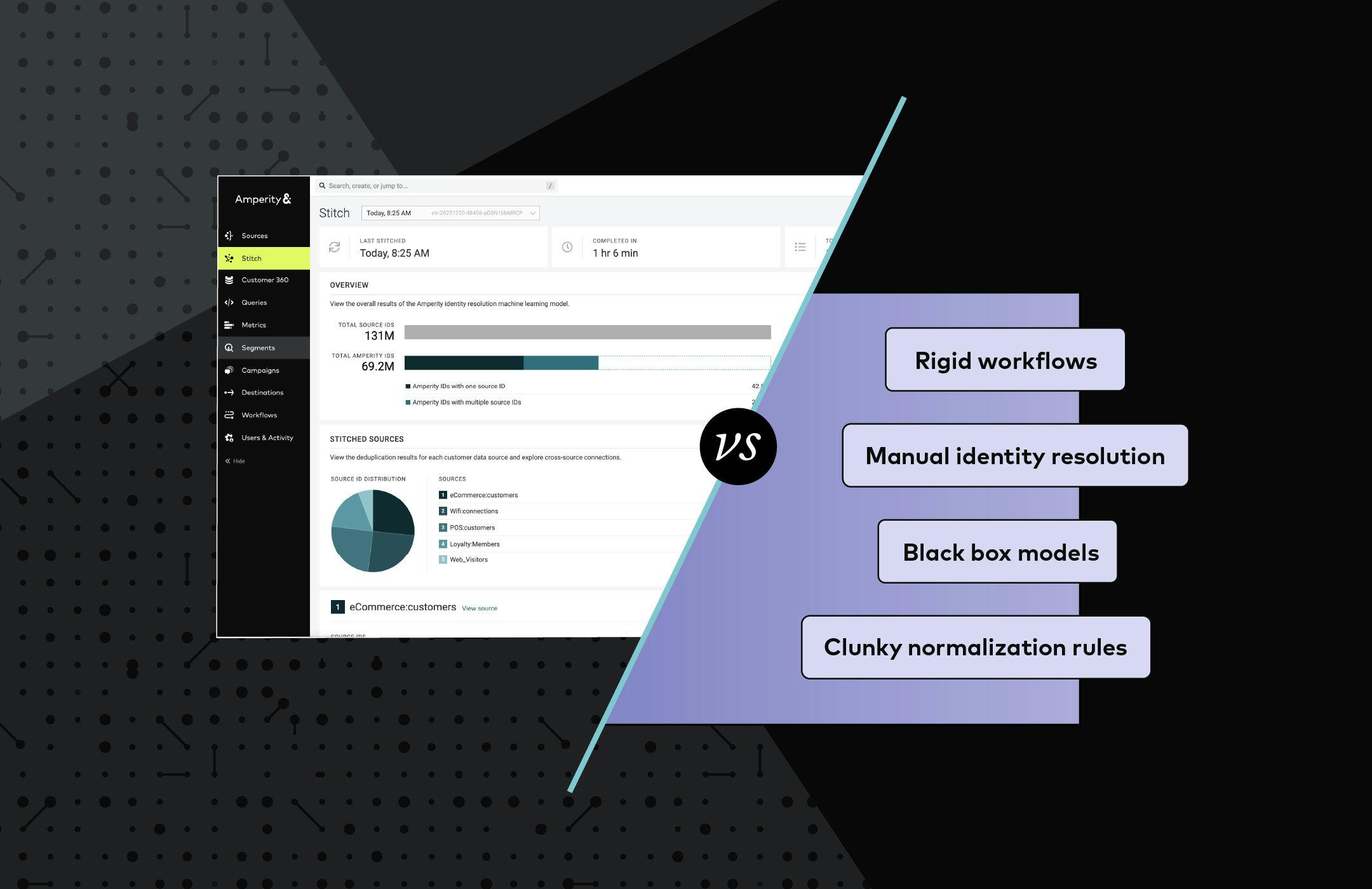Today's businesses find themselves in the midst of a dynamic customer data environment shaped by rapid technological advancements, shifting consumer behaviors, and an ever-expanding number of data sources. While many CDPs claim to address these challenges, few actually manage to provide a positive business impact.
Amperity was founded with a single-minded focus on turning complex customer data into business value, unlike other providers who started from general-purpose data and backed into customer data.
Our approach embraces customer data in all its inherent messiness. No more trying to force-fit customer data into rigid pre-defined schemas. Here's how we set ourselves apart from other "CDPs":
Data Ingestion
Amperity
Built-in data normalization rules
Amperity uses semantic tags to automatically normalize customer data after ingestion to save technical resources. Businesses also have the ability to declaratively set their own semantic tags for data fields unique to their data architecture or industry.
Other solutions
Normalization rules must be built manually
CDPs that evolved from general data use cases require IT teams to manually create rules using workflows to standardize customer data for every data source ingested. Additional work is then required to shape customer data into rigid schemas like YAML before data can be unified with other sources.
Identity Resolution
Amperity
Automatically resolve identities with AI
Amperity automates identity resolution through our multi-patented AI/ML to find the hidden connections in your online and offline PII data and create a stable, universal identifier. IT teams have the flexibility to define merge rules for different use cases, explore why data was merged, and unmerge data with a single click.
Other solutions
Manual identity resolution
General data CDPs require technical teams to supply a universal identifier and manually construct the entire customer unification workflow. Resolving conflicting identities or uniting sparse PII data requires procuring third-party identity software which is known to be expensive, inflexible, and increasingly less effective as third-party data is deprecated.
Shaping Data for Usage
Amperity
On-platform, flexible data models
Amperity automates data modeling and provides role-based access to hundreds of data models, pre-built attributes, and AI-powered predictive segments trained on historical data on one platform. IT teams can easily customize Amperity’s data models or build their own on the platform to conform to the data architecture in your tech stack.
Other solutions
Black box, inflexible data models
When CDPs are biased toward general-purpose data, customer data modeling is not baked into the platform. Instead, these CDPs offer packages with pre-built code snippets used to handle complex customer data operations. Unfortunately, these packages are managed by request and require a support ticket to customize.
Change Management
Amperity
Full production sandbox for testing
Amperity provides a single interface to monitor end-to-end customer data workflows to ensure data can be effectively used by downstream systems. IT teams get full sandbox copies of a production environment and tools to easily QA, monitor, and roll back changes.
Other solutions
Project-based workflow testing
CDPs biased toward general data have data workflow projects defined for a specific task like normalization or unification. IT teams can make revisions and versions for each task, but there is no unified environment to test end-to-end workflows across ingestion, ID resolution, unification, query, and activation.
“A lot of companies claim that they have a CDP. The only company that we found that's a true CDP was Amperity… If you want a platform that is about seamless integration and being able to access your customer data and have the insights to effectively market against them, we found that Amperity was the only one that could do that.”

